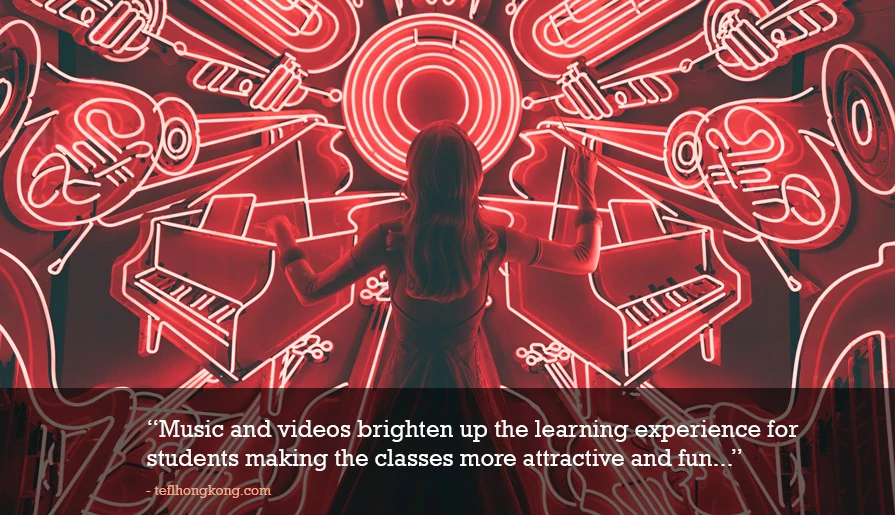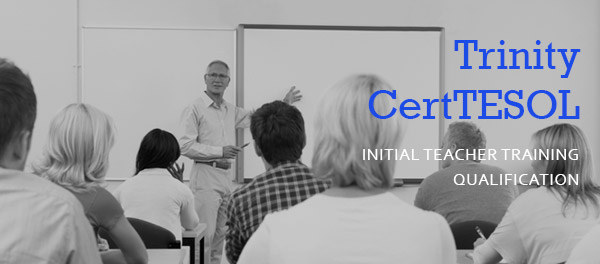
- By: Anna McIver
- In: ESL Activities
Ever wondered how to incorporate music/videos/TV into your lessons and not lose control of the class?
When it comes to making lessons fun and interactive, a good way of achieving this is through the use of music, videos, TV and film clips. Students respond well to these types of multimedia. They make a nice change. When used to their full effect, they can help to explain ideas, provide grammatical examples, or act as a ‘hook’ to get students excited about a new topic.
However, you use them within your own ESL class; it is vital to make sure they are appropriate, relevant, and enhance your student’s learning.
In this article, we will highlight some ways of making sure your multimedia clips or songs are used to their full advantage.
We will also suggest some of our favourite websites and sources for music and video that can be used within your own English classroom.
In this article, we’ll cover:
Songs and Music
- Why use songs and music?
- Suggested uses within the classroom
- Pitfalls to avoid
- Websites and resources
Video Clips, TV and Film
- Why use video, TV, and film?
- The best ways to implement them in your classes
- Risks involved
- Websites and resources
Read on for all our tips and suggestions, or just those sections that seem the most pertinent for you.
“Tell me, and I forget. Show me, and I remember. Involve me, and I understand.”
– Chinese proverb
Why use songs and music?
Put simply, music and songs brighten up the learning experience for students. They provide a context for particular language when used for grammar exercises, for example, and they can make classes more attractive and fun, especially for younger learners and teenagers.
Suggested uses within the classroom
Many teachers use songs as a way of ‘jazzing up’ listening activities. For example, providing fill the gap listening activities using song lyrics is just one way to do this.
For higher ability students, ask them to listen for a key grammar point such as a conditional, present perfect, and so forth. Entire classes can be planned around one song; for example, students can write their own verses, analyse meanings, and highlight grammar points. The possibilities are endless!
Pitfalls to avoid
It goes without saying that any song you choose should be age-appropriate, not include bad language. You should ensure that you have watched any music video you use in the classroom from beginning to end to avoid any nasty surprises!
When using a resource created by someone else, such as another ESL teacher, make sure it does not include errors such as spelling and grammar before incorporating it into your class.
Another point to consider is to know why you are using a song. If you are not clear on how it is educationally beneficial, then that is a sign that it isn’t appropriate. On the other hand, if it fits your objectives and will enhance learning, go ahead!
Websites and resources
www.lyricstraining.com – This fun website allows you to practice listening and writing (typing) by listening to a song, watching the video, and typing in the missing lyrics that appear as subtitles. It is best used as homework or with small classes or those who have computer access. You don’t need to set up an account to play and can choose the level of difficulty.
https://www.lyricsmode.com/ has a similar setup and is an excellent alternative to lyrics training.
https://www.eflclub.com/2songs/songs.html has a limited selection of songs but allows you to listen to six Beatles songs, Louis Armstrong, or hits by The Monkeys while filling in boxes with the missing words. What is great here is that you can check your answers for immediate feedback and can choose to be provided with a word list if you wish. This would be fun to use with a class if you provided the missing words and allowed them to work in pairs to hold up the missing words as the song progresses!
“I admire people who dare to take the language, English, and understand it and understand the melody,”
– Maya Angelou
Why use video, TV, and film?
Again, like music, these types of additional activities and sources of media allow students to enjoy their classes even more and encourage them to watch English TV, video, and documentaries outside their lessons. There are endless options for this type of multimedia, from news stories to documentaries and clips from soaps to clips from animated films.
There is sure to be something you can incorporate to provide a different viewpoint. This also helps you to move away from just using a textbook and the media it provides.
The best ways to implement them in your classes
Videos and TV clips are usually best used when they are relatively short and focus on a relevant topic or grammar point. Short news stories are often helpful when starting a topic that focuses on a global issue, for instance, and can lend itself well to follow up conversation and discussion.
On the other hand, clips taken from films often provide an excellent, concise snapshot of specific grammar, for example, phrasal verbs or how to order food in a restaurant.
Risks involved
Similarly, when choosing music, clips need to be suitable for their audience and clearly linked to the class objectives. Always consider why you’re using a clip or video and how it will better explain ideas or improve the students’ learning. Also, check for new vocabulary, especially in news stories or more complicated documentary clips, and pre-teach this to avoid too much confusion.
Websites and resources
https://www.eslvideo.com/ This website provides a range of videos and quizzes that might be useful homework tasks for students or for specific use in class.
https://lessonstream.org/lessons/ This website, made by a fellow ESL teacher, is brilliant! It provides a considerable amount of free material organised by level and includes many video-based classes with entire lesson plans and resources. Great to use as one-off classes or for special occasions such as in the run-up to Christmas.
https://www.youtube.com/channel/UCKlqMc-09XZknXO8jsK-15A This link takes you to the official Newsround YouTube channel. This is a daily news show aimed at young people and aired on children’s TV in the UK. Previously it was only possible to view it if you lived in the UK, but now they have launched their YouTube channel, it can be watched worldwide. It covers all sorts of international news and is an excellent resource for ESL classes.
Conclusion: So, what do you think? Could you use any of our suggested resources in your own classroom? Why not click on a link and see where it takes you? Perhaps you’ve considered some of these ideas before, and maybe you’ve learnt something new from reading this article. Whichever applies to you, we hope you can continue, or begin, to incorporate a range of music and video resources in your English language classes and that your students benefit from them.
As always, we wish you luck with your continued career in ESL and suggest you have a browse around our site to find out more about all things English teaching related, from TEFL courses to CELTA and top teaching tips!
Also Read: Tips to make your students love and learn English
Please Share:This article was originally published on October 22, 2020 and was last updated on November 30, 2020.
Courses We Offer:

1. CertTESOL: Certificate in TESOL
A level 5, initial teacher training qualification for new and experienced teachers, enabling you to teach English anywhere in the world. The course is equivalent to Cambridge CELTA.
Learn More
Developed by our Trinity CertTESOL experts, for a comprehensive, self-paced learning experience. Earn an internationally recognized certificate and master essential teaching skills, accessible globally 24/7.
Learn More